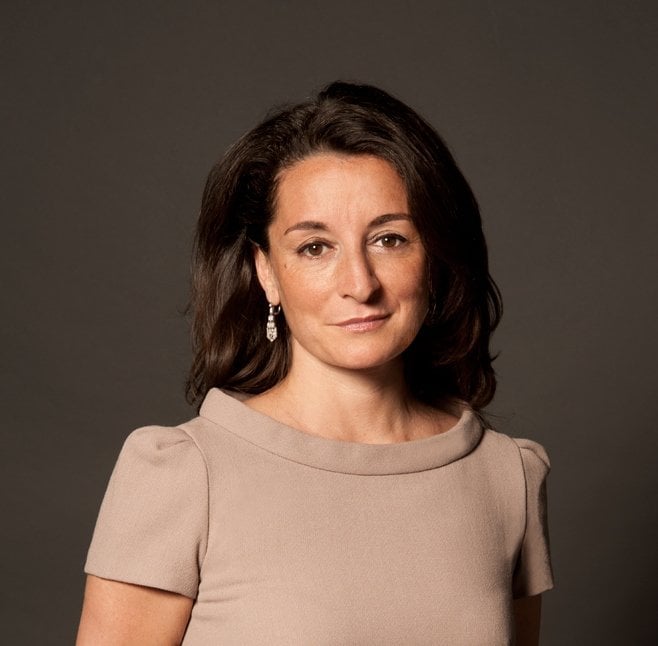Christie’s has stood on King Street in St James’s for the past 194 years. The auction house’s founding dating back even further, to 1766, when James Christie held his first sale on Pall Mall. It is an institution as venerable as those which surround it, from the London Library to the panoply of gentleman’s clubs and St James’s Palace itself.
Along with its traditional rival Sotheby’s, Christie’s has become synonymous with art auctions, and after each sale, the press indubitably report on the extraordinary prices achieved: in 2015, Picasso’s Version ‘O’ of Les Femmes d’Alger (1955) sold for a world-record setting £179.4m, while Modigliani’s Nu Couché (1917) sold in the same year for £170.4m. These are figures which Giovanna Bertazzoni knows well, for as Co-Chairman of Impressionism and Modern Art at Christie’s, she oversees one of their most important (and lucrative) departments. As she says to me in her rich Italian accent, “I’m very lucid about my job – it’s to sell works of art: you can’t put it another way.”
Bertazzoni is as immersed in her art as any curator or critic: she studied art history at Italy’s prestigious University of Pavia and the École Nationale du Patrimoine in Paris, before working for the Achenbach Foundation for Graphic Arts in San Francisco. Moving to the UK in 1997, she went to work for Christie’s, initially as a catalogue editor, before rising through the ranks. She’s proud that she has “worked in every single role in the department.” Bertazzoni talks of a “passion for works on paper, particularly original drawings, gouaches, pastels, watercolours.” It is this combination of market acumen and a genuine love for art that marks Bertazzoni out.
Bertazzoni talks about the whole process of selling, buying, and collecting art, a commerce marked by the emergence of significant Chinese collectors in recent years: “For a lot of very important mainland Chinese collectors, they come to us after they have gathered an important collection of Chinese art. They start with their identity – as we all do… Generally they come to us after they have collected for ten year, after that they feel it’s the moment to explore something else. But they’re collectors, they’re astute, they know the game.” Chinese collectors have particularly sought out Impressionist works, driving the style back into renewed fashion.
Becoming department head as the great recession began in 2008, Bertazzoni recalls with an encyclopaedist’s precision the period’s sales, saying, that for the art market, “the recession was a short moment of hesitant supply, which was confined to maybe nine months in 2009.” Modern art is in the middle of a virtuous circle, with “Surrealism finding great strength at the moment because it’s the cradle of a lot of conceptual art, so a lot of powerful buyers look back to it,” in turn encouraging rarer pieces to market, generating even more interest.
This requires careful management by Christie’s: one of the key aspects of Bertazzoni’s role is meeting with prospective sellers, shepherding works to market, creating the right context for artworks to be sold. This has lead to what’s become known as “themed” sales, such as 2015’s Looking Forward to the Past sale, described by Bertazzoni as “a reflection around the avant garde,” which saw the Picasso Les Femmes d’Alger achieve its astonishing record. They appeal to what she calls “collectors in the Medici style, putting together a cabinet of curiosities, where they want to put together a collection of the best of everything.” It’s a constantly shifting market, and the adjective ‘nimble’ springs to Bertazzoni’s lips more than once.
You feel Bertazzoni’s thrill when she confides her surprise at “how many works in a matter of years, have gone for over 50 million pounds – we never thought we would see that, it’s exceptional.” One of her greatest memories is the sale of Gustave Klimt’s Portrait of Adele Bloch-Bauer I for £135m in 2005 to the Neue Galerie in New York. Returned to Maria Altman by the Austrian government after a protracted legal battle, Altman reclaimed the Klimt paintings stolen from her family by the Nazis, the saga dramatised in the 2015 film Woman in Gold. “I do remember… as Maria was there, she was 90, and so charismatic and fighty, and really someone who had decided to rewrite history.” Christie’s became the centrepiece in an important moment of cultural repatriation, because, really, where else?
As Bertazzoni guides me through the labyrinth of storage rooms beneath the King’s Street premises, I spot two fine Miros being prepared for sale and experience a frisson of delight, a quiver Bertazzoni still gets at being surrounded everyday by the glories of world art; as she says, “If we think what is beautiful is good, à la Plato, then we are also doing good.”



